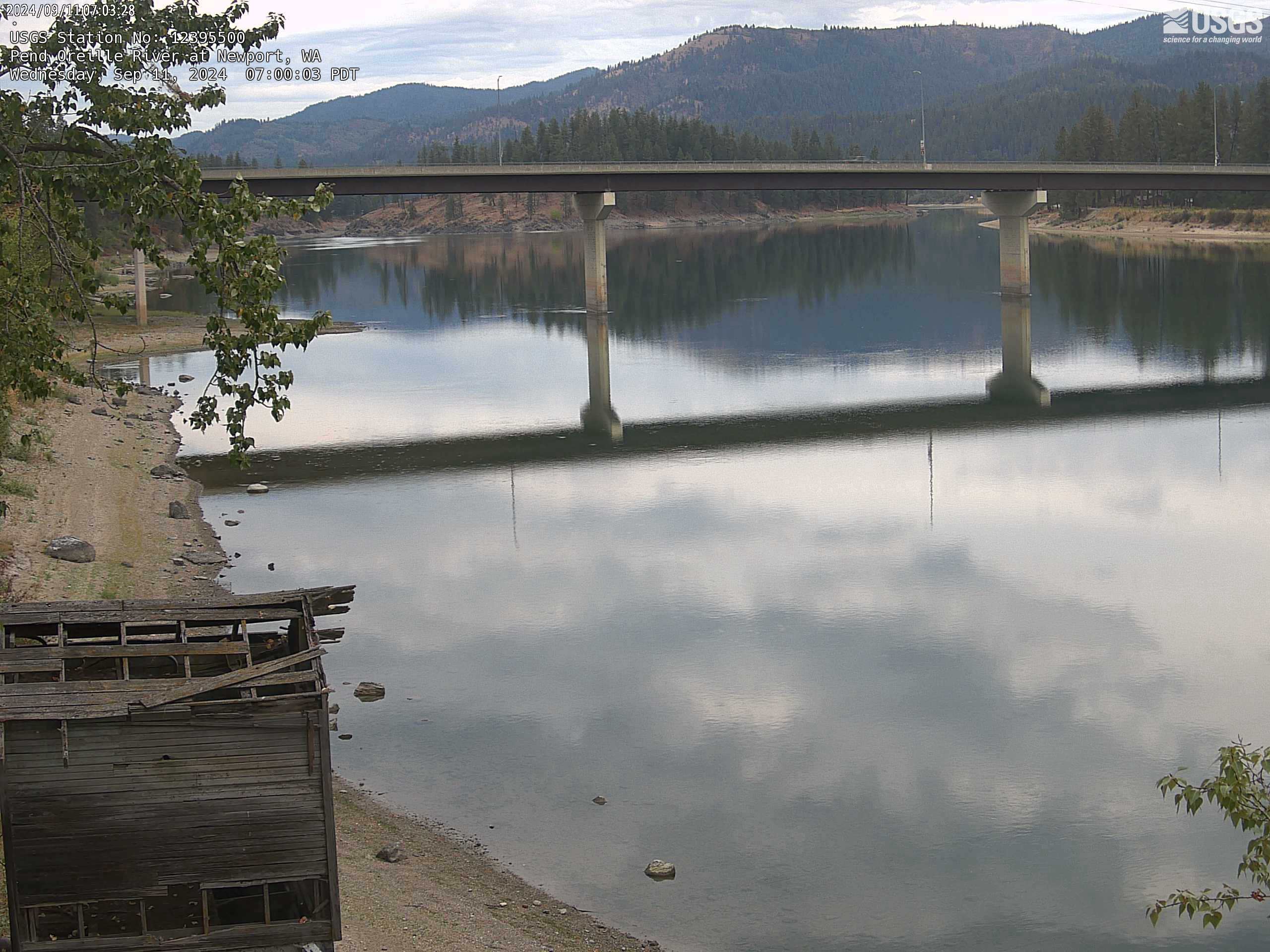Oldtown, ID Weather Cams
Pend Oreille River Bridge Cam

Oldtown, Idaho: From Timber Town to Tranquil Community
Oldtown, ID Weather Cams. Nestled along the Pend Oreille River and straddling the Idaho-Washington border, Oldtown, Idaho, has a rich history shaped by the timber industry, transportation developments, and a resilient community spirit. This narrative explores the key phases in the history of Oldtown, highlighting its transformation from a bustling logging hub to a serene residential community.
Native American Heritage
Long before European settlers arrived, the area now known as Oldtown was inhabited by the Kalispel and other Salish-speaking tribes. These Native American groups utilized the abundant natural resources of the Pend Oreille River and surrounding forests for fishing, hunting, and gathering. The river provided a vital transportation route, and the region’s rich biodiversity supported their traditional way of life.
The Kalispel and other tribes had a deep connection to the land, which was reflected in their seasonal migrations and established trails through the dense forests and along the riverbanks. These trails would later become crucial pathways for explorers and settlers.
European Exploration and Settlement
In the early 19th century, European fur traders and explorers began to venture into the Pend Oreille River Basin. The Hudson’s Bay Company and the North West Company established trading posts in the region, engaging in trade with the Native American tribes. These early interactions paved the way for further exploration and eventual settlement by European Americans.
The mid-19th century brought an influx of pioneers and homesteaders to the region, drawn by the promise of fertile land and abundant resources. The completion of the Mullan Road in the 1860s, which connected Fort Benton, Montana, to Fort Walla Walla, Washington, facilitated this movement. Some settlers chose to stay, establishing small farms and communities along the route.
The Logging Boom
The late 19th century marked the beginning of significant transformation in the Oldtown area with the advent of the logging industry. The region’s vast forests, primarily composed of white pine and other valuable timber, attracted logging companies and workers. Timber became the lifeblood of the community, with logging camps and sawmills springing up along the river and rail lines.
The Great Northern Railway, completed in the 1890s, played a pivotal role in Oldtown’s development. The railway provided a means to transport logs and lumber to distant markets, fueling the growth of the local economy. The town of Newport, Washington, directly across the river, became a key commercial center, with Oldtown serving as a vital support community.
Establishment and Growth of Oldtown
Oldtown was officially established in the early 20th century, with its economy deeply rooted in the timber industry. The town grew rapidly, attracting loggers, mill workers, and their families. The construction of bridges and infrastructure facilitated the movement of goods and people between Oldtown and Newport, fostering a sense of interconnectedness between the two communities.
The early 20th century saw the establishment of schools, churches, and businesses in Oldtown, reflecting the growing needs of the community. The town’s residents developed a strong sense of identity and pride, building a close-knit community despite the often harsh and demanding conditions of logging life.
The Great Depression and World War II
Like many American towns, Oldtown faced significant challenges during the Great Depression. The economic downturn of the 1930s led to widespread unemployment and hardship. The decline in demand for lumber exacerbated the situation, impacting the local economy. However, the community demonstrated resilience, with local businesses and families supporting each other through the difficult times.
The outbreak of World War II brought new opportunities and challenges to Oldtown. The demand for timber for military purposes led to a resurgence in the logging industry. Many residents served in the armed forces, while others contributed to the war effort by working in the mills and logging camps. The war years brought a renewed sense of purpose and unity to the community.
Post-War Changes and Economic Diversification
The post-war era brought significant changes to Oldtown. Advances in logging technology and changes in the timber industry led to the consolidation of operations and the closure of some local mills. The town faced economic challenges as it sought to adapt to these changes.
During this period, Oldtown began to diversify its economy. The development of new businesses and industries, including agriculture and small manufacturing, provided alternative sources of employment. The construction of highways and improved transportation infrastructure enhanced connectivity, making Oldtown more accessible to tourists and visitors.
Modern Development and Community Life
In recent decades, Oldtown has continued to evolve, transitioning from a predominantly timber-based economy to a more diverse and sustainable community. The town has embraced its natural beauty and recreational opportunities, attracting tourists and outdoor enthusiasts. The Pend Oreille River and the surrounding forests offer a range of activities, including fishing, boating, hiking, and camping.
Oldtown’s small-town charm and close-knit community have become key attractions. The town hosts a variety of community events and festivals, celebrating its heritage and fostering a sense of belonging. The annual Oldtown Days festival, for example, brings together residents and visitors for a weekend of fun, food, and entertainment.
Preservation and Future Growth
As Oldtown looks to the future, the preservation of its historical and natural resources remains a priority. Efforts to protect the local environment and maintain the town’s historical character are supported by community organizations and local government. Sustainable development practices are being implemented to ensure that Oldtown can grow while preserving its unique identity.
Education and community engagement continue to play vital roles in Oldtown’s development. The town’s schools and community centers provide important services and opportunities for residents of all ages. Programs focused on environmental education, historical preservation, and community building help to foster a sense of pride and stewardship among the town’s residents.
Conclusion
From its early days as a logging hub to its current status as a tranquil community with a rich heritage, Oldtown, Idaho, has undergone significant transformations. Its history is a testament to the resilience and adaptability of its residents, who have navigated economic shifts, technological changes, and environmental challenges. Today, Oldtown stands as a vibrant and welcoming community, offering a blend of historical charm and natural beauty. Its rich history and strong sense of community ensure that Oldtown will continue to thrive in the years to come.
For more information, visit the official Oldtown, ID website.
